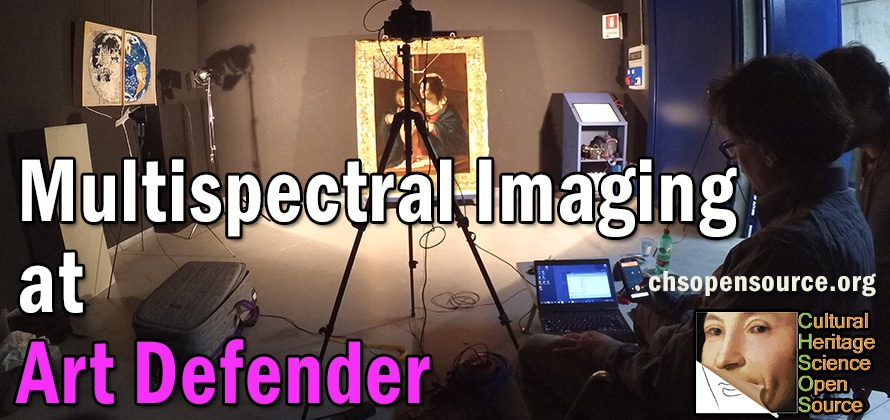
We have been collaborating with Alessandro Fiamingo who has taken our Training program. He is currently working at Art Defender, Bologna. We have just tested our Multispectral Imaging system on one of the paintings of Giovanni Francesco Barbieri, Guercino (1591-1666) belonging to the fine arts museum in Cento, Italy and stored at Art Defender.
Multispectral Imaging (MSI) is used to identify and map pigments in polychrome artworks and to enhance the reading of faded documents. Conservators can use this technique to distinguish original sections from inpaints and to select the proper conservation procedures. MSI analysis is based on the same concepts of Reflectance Spectroscopy but MSI has the added advantage that the pigments can be identified and mapped remotely on large areas rather than just a spot. Images of an object in a series of spectral bands are acquired, and once the images are registered and calibrated, they are uploaded into a Reflectance Image Cube. This represents the pixels of each image in the X and Y axes, while the Z dimension denotes the wavelength of each spectral image. From the cube, it is then possible to reconstruct the reflectance spectrum for each pixel of the image. Such systems are generally composed of a monochromatic camera (a CCD or an InGaAs camera) equipped with an appropriate wavelength selection system. These MSI systems are called multispectral or hyperspectral imagers depending on the number of spectral images produced; generally in the order of a dozen for the former, and many more for hyperspectral systems.
The Multispectral Imaging (MSI) Training module presents our affordable and open source MSI system developed in 2015 by CHSOS thanks to the first crowd-funded Research Project in Conservation Science – Multispectral Imaging (MSI) for Art and Archaeology – (contributions from 16 Countries). The Training program illustrates the complete workflow for spectral images calibration, registration, and pigments mapping with this low-cost system which is composed of a commercial digital camera (modified to cover the 360-1100 nm range), 18 bandpass filters and free software. The advantages related to the implementation of a digital camera, rather than a monochromatic scientific camera, are significant. The same camera can be used for other methods, such as Technical Photography (TP), making the overall imaging equipment lighter and more versatile. This MSI system uses in-scene black, white and gray reference targets so it can be tailored to the needs of each specific art or archaeology documentation, using different lenses and lamps.
More posts on Multispectral Imaging












